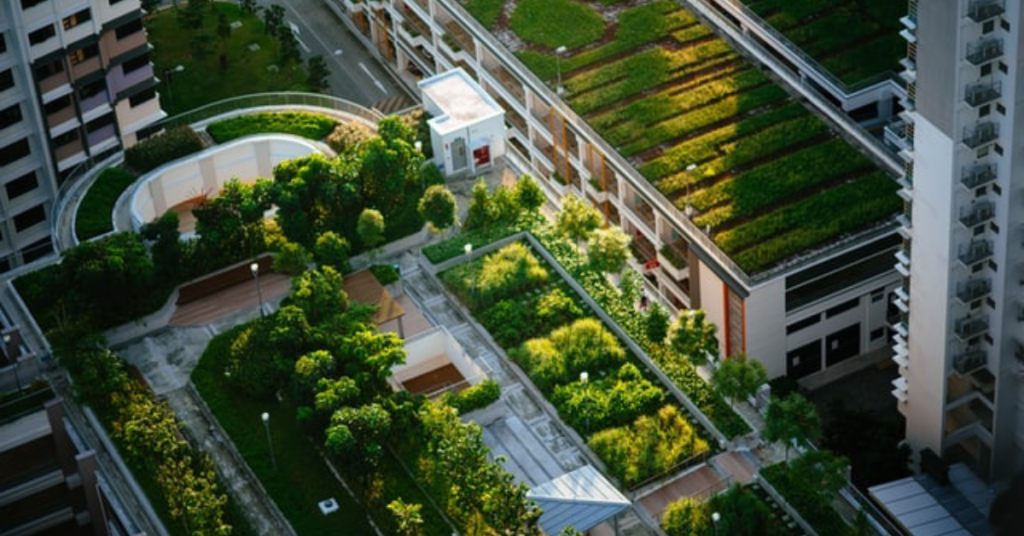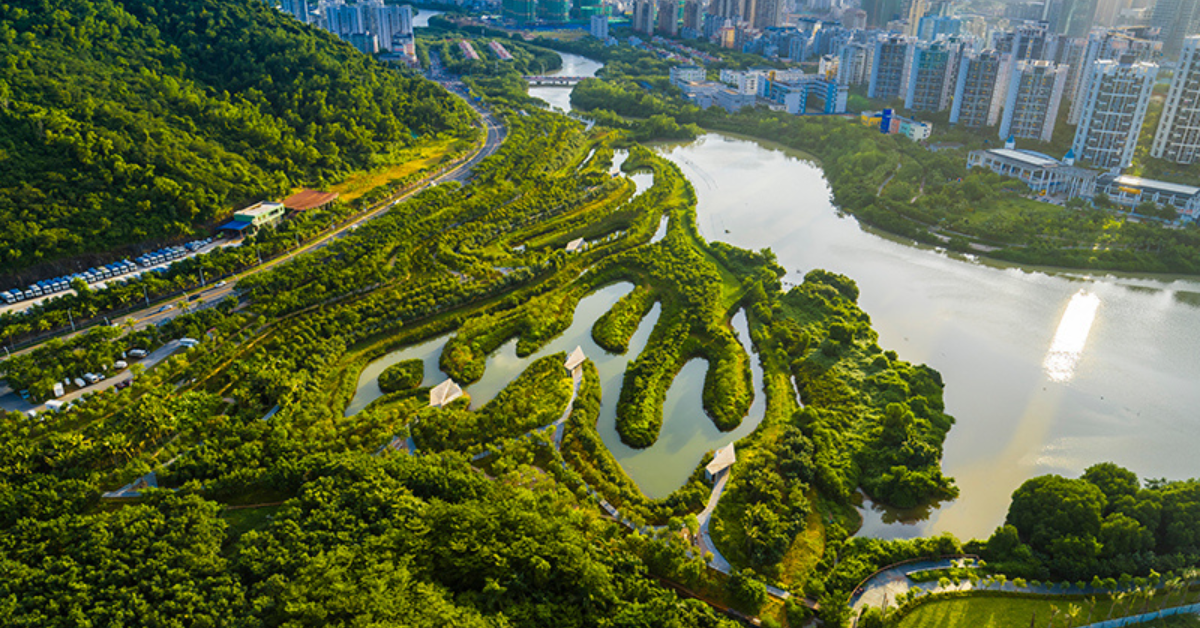Transforming Urban Spaces with Green Infrastructure
Urban areas are rapidly expanding, but as cities grow, they often face significant environmental challenges. These challenges include pollution, flooding, heat islands, and the loss of natural habitats. To address these issues, many urban planners and property developers are turning to green infrastructure. This innovative approach not only beautifies cities but also enhances the quality of life for residents. In this blog post, we will explore how green infrastructure improves urban environments and why it’s essential for sustainable development.
What is Green Infrastructure?
Green infrastructure refers to a network of natural and semi-natural systems that provide various environmental benefits. This includes parks, green roofs, rain gardens, and urban forests. Unlike traditional gray infrastructure, which primarily consists of concrete and steel, green infrastructure integrates natural processes to manage stormwater, reduce heat, and enhance biodiversity.
One of the biggest advantages of green infrastructure is its ability to mimic natural processes. For example, green roofs can absorb rainwater, reducing runoff and minimizing the risk of flooding. Similarly, trees and vegetation can filter pollutants from the air, contributing to cleaner urban environments.
The Importance of Green Infrastructure in Urban Planning

Urban planning plays a crucial role in determining how cities develop. Incorporating green infrastructure into planning processes can lead to healthier, more sustainable communities. By prioritizing nature-based solutions, planners can ensure that cities are resilient to climate change and equipped to handle increasing populations.
In addition to environmental benefits, green infrastructure can also boost economic development. Properties near parks and green spaces often see increased property values. Studies have shown that access to nature can enhance mental health, leading to happier, more productive residents.
Furthermore, integrating green spaces into urban design can improve social cohesion. Community gardens and shared green areas encourage residents to interact, fostering a sense of belonging. This is especially important in densely populated urban centers where social isolation can be prevalent.
How Green Infrastructure Supports Sustainable Water Management
One of the most significant challenges urban areas face is water management. Traditional drainage systems often struggle to cope with heavy rainfall, leading to flooding. Green infrastructure offers sustainable alternatives to mitigate these issues.
Rain gardens, for instance, are designed to absorb excess rainwater, allowing it to slowly infiltrate the ground. This reduces the burden on storm drains and helps recharge groundwater supplies. In addition, permeable pavements allow rainwater to seep through, decreasing surface runoff and pollution.
In Utah, the SWPPP (Stormwater Pollution Prevention Plan) is integral for property developers. Implementing green infrastructure helps comply with regulations while enhancing the urban landscape. By using these methods, developers can create sustainable and resilient communities that effectively manage water resources.
The Role of Vegetation in Cooling Urban Areas
Cities are known for their heat islands, where temperatures can be significantly higher than surrounding rural areas. This is primarily due to the abundance of concrete, asphalt, and other materials that absorb and retain heat. Green infrastructure can combat this phenomenon.
Trees and vegetation play a vital role in cooling urban areas. They provide shade and release moisture into the air through a process called transpiration. This natural cooling effect can lower surrounding temperatures by several degrees.
Incorporating more greenery into cities not only enhances comfort but also reduces energy costs. With lower temperatures, the demand for air conditioning decreases, which can lead to substantial savings for homeowners and businesses alike.
Enhancing Biodiversity in Urban Environments
Urbanization often leads to habitat loss and reduced biodiversity. This is concerning, as diverse ecosystems are essential for maintaining ecological balance. Green infrastructure can help reverse this trend by creating habitats for various species.
Planting native vegetation in urban spaces is one effective way to promote biodiversity. Native plants are adapted to local climates and soils, making them easier to maintain. They also provide food and shelter for native wildlife, including birds, insects, and small mammals.
Incorporating features like pollinator gardens and bird-friendly spaces can further enhance urban biodiversity. These initiatives also educate residents about the importance of wildlife conservation, fostering a stronger connection between people and nature.
Economic Benefits of Green Infrastructure
Investing in green infrastructure can yield significant economic benefits for cities. While the initial costs may seem high, the long-term savings can outweigh expenses. For instance, green roofs may require a larger upfront investment but can reduce heating and cooling costs significantly over time.
Additionally, green spaces can attract tourism, boosting local economies. Parks and recreational areas provide venues for events, festivals, and gatherings that draw visitors. This influx of people can lead to increased business for nearby shops and restaurants.
Furthermore, properties near green infrastructure tend to appreciate in value. Buyers are often willing to pay a premium for homes close to parks and nature, leading to higher property taxes that benefit the community as a whole.
Community Involvement in Green Infrastructure Projects
Engaging the community in green infrastructure planning and implementation is critical for success. Residents often have valuable insights into the needs and desires of their neighborhoods. Involving them encourages ownership and stewardship of green spaces, leading to better maintenance and care.
Public workshops and meetings can be effective ways to gather input and foster community involvement. Additionally, volunteer programs for planting and maintaining green infrastructure can create a sense of pride among residents.
Collaborating with local schools and organizations can also enhance community engagement. Education programs centered around sustainability and the benefits of green infrastructure can empower citizens to advocate for more green initiatives in their neighborhoods.
Overcoming Challenges in Implementing Green Infrastructure
While the benefits of green infrastructure are clear, implementing these solutions can present challenges. Budget constraints, limited space, and regulatory hurdles can deter property developers and city planners from pursuing green projects.
To overcome these obstacles, it is essential to advocate for supportive policies at local and state levels. Education about the long-term benefits of green infrastructure can help secure funding and resources.
Partnerships between the public and private sectors can also facilitate the implementation of green infrastructure. When stakeholders work together, they can share costs and expertise, leading to more successful projects.
The Future of Green Infrastructure in Urban Planning
The future of urban planning will undoubtedly involve increased reliance on green infrastructure. As cities continue to grow, the need for sustainable solutions will only become more pressing. By integrating green infrastructure into planning processes, cities can build resilience and adaptability for years to come.
Emerging technologies, such as smart irrigation systems and data analytics, will play a significant role in optimizing green infrastructure. These tools can enhance the efficiency of water management and improve maintenance practices.
Ultimately, green infrastructure represents an opportunity to redefine urban living. By prioritizing nature-based solutions, cities can create healthier, more vibrant environments that benefit both residents and the planet.
Read More: Learn to Sit Back and Observe. Not Everything Need – Tymoff
Conclusion
In conclusion, green infrastructure is vital for improving urban environments. It offers numerous benefits, from sustainable water management to enhanced biodiversity and economic growth. By prioritizing green solutions, property developers, city planners, and environmentalists can work together to create healthier, more resilient cities.
If you’re passionate about building sustainable urban spaces, consider exploring green infrastructure further. Engage with your community, advocate for nature-based solutions, and be part of the movement that prioritizes a greener, healthier future for urban areas.






